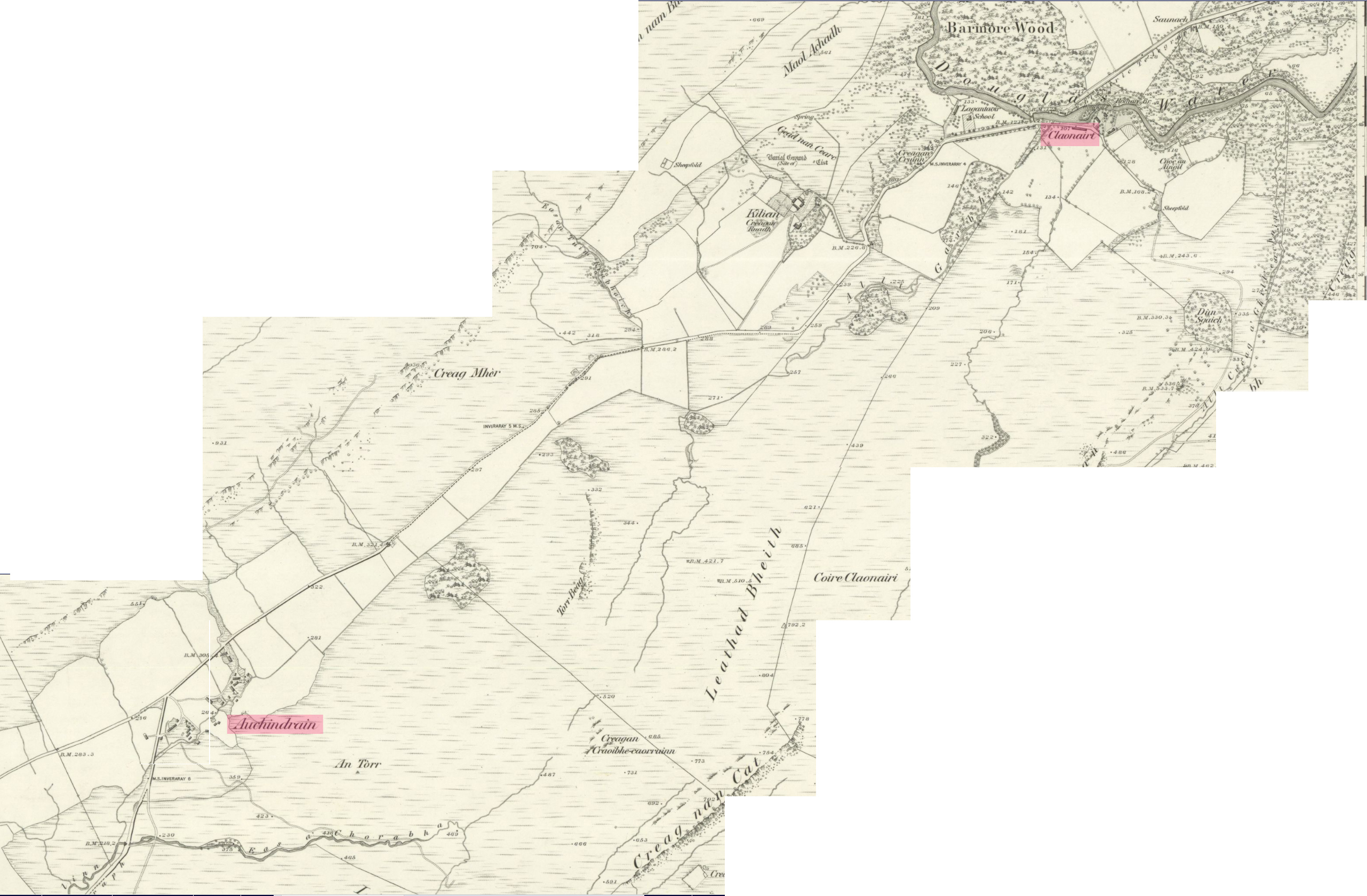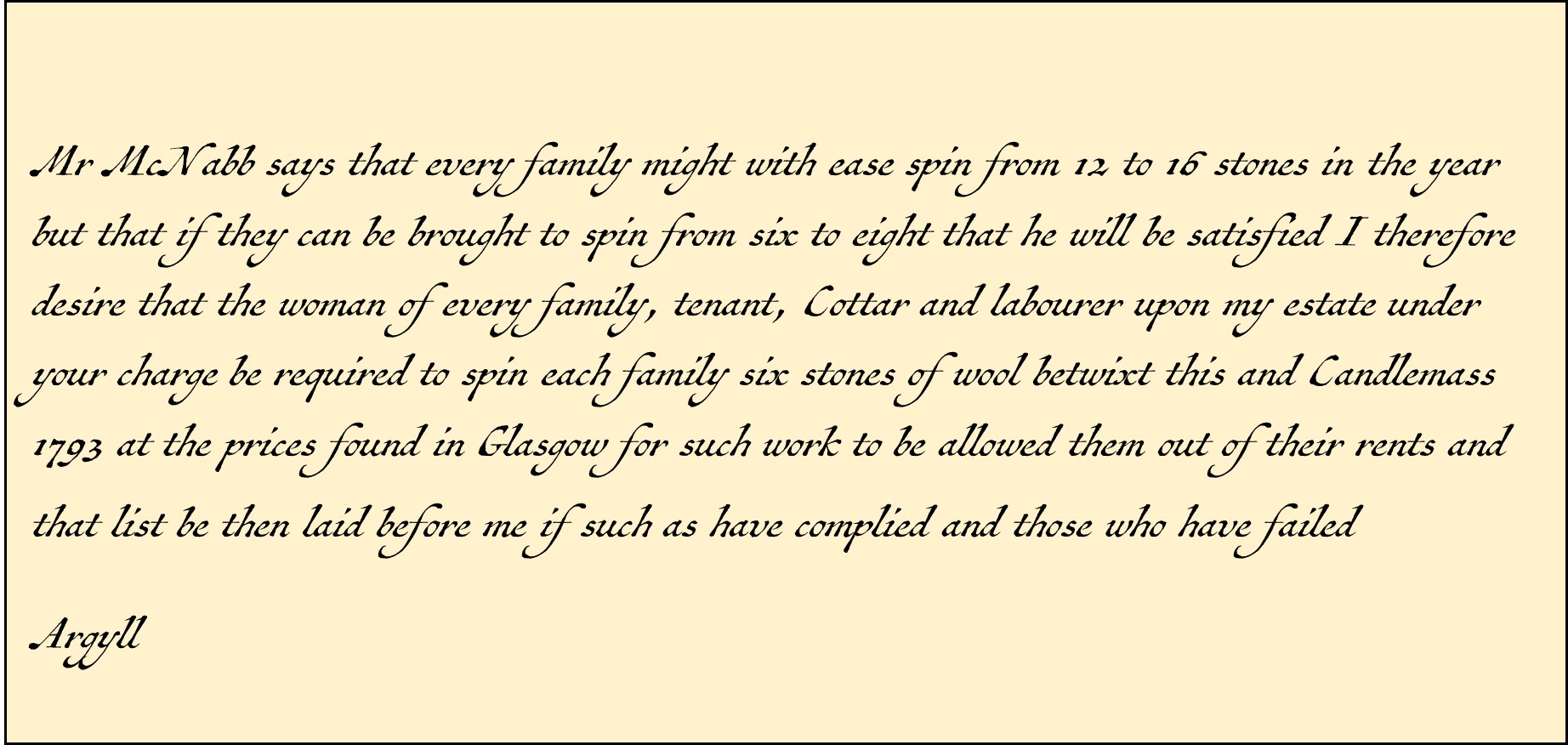The Women of Auchindrain and the Spinning Controversy, Part 1
Scotland was a turbulent place in the 1700s. In 1707, the Scottish parliament was dissolved and rule moved to Westminster, where it remained for the next 292 years. There were two Jacobite uprisings, in 1715 and 1745, with the final defeat in 1746 at Culloden. From the 1750s tenants were removed from their centuries-old communal townships in what became known as the Highland Clearances.
The clearances were part of a period of ‘agricultural improvement’, undertaken by landowners to increase income from their estates. The cleared land was used to graze sheep, primarily to produce wool to be made into cloth.

At the same time, industry was changing. Gradually, work was moving from homes and communities into factories and mills that could produce goods faster and on a larger scale. It was against this backdrop that in 1776-77 the Duke of Argyll opened a woollen mill at ‘Clunary’ (Claonairigh), a township between Auchindrain and Inveraray, with the intention of weaving cloth for, amongst other things, uniforms for the army - and even to make carpet. Traditionally, spinning – the process of making yarn from a material like sheep’s wool - was work that had been done at home, exclusively by women, and quite often to produce yarn for cloth for the family’s own use. Indeed, the term “spinster” to describe an unmarried woman looks back to when low-income, home-based spinning was one of the few ways in which young and unmarried women could earn money.
The Duke’s new mill will have required a great deal of yarn to keep the looms running. From the 1770s new inventions had started to mechanise the spinning process, but the machinery was complicated and expensive and it seems clear that from the outset the Duke’s business model presumed that the women of the area would spin for the mill. But by 1792, it is clear that all was not going well. The Argyll Estate archives hold a record of a meeting between the Duke and his mill manager, at which they were clearly discussing the difficulty of keeping the mill supplied with yarn. The Duke saw a simple solution, and instructed accordingly:

Tomorrow we will see how the women of Auchindrain reacted to this instruction.